An embryo, a pregnancy
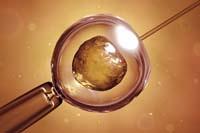
In the Quirón hospital in San Sebastián, Dr. Miren Mandiola is facing nine embryos. They are embryos that survive after three days. A woman who could not have children was removed from fifteen obocytes after stimulating her ovaries with hormones. Mandiola introduced a sperm to each oocyte by microinjection. For nine of these fifteen embryos have advanced. And now you have to choose three of those nine to impose on the woman. It is not any decision, since the probability of getting pregnancy depends on the quality of the embryo.
Mandiola selects embryos taking into account several characteristics: "We choose according to morphological criteria". One criterion is the speed of growth: "The oocyte fertilized with the sperm must have four cells at 48 hours, that is the perfect stage and at 72 hours the perfect stage is eight cells." They make a sort of score to measure morphological quality. "There are a series of morphological characteristics that indicate a good or bad evolution of the embryo. If you have more or less cells than necessary, it is not adequate; if the cells are not the same size, you do not even have parts of detritus. Two or three embryos with the highest score are chosen, understanding that they are the ones with the highest capacity of adherence to the uterus".
But good looking embryos do not have to be healthy. "We transfer many good-looking embryos, but proportionally very few pregnant women are left," explains Mandiola. Some of these embryos may undergo mutations in genes or aneuploidies, i.e., an abnormal number of chromosomes. In many cases the embryos do not stick or produce abortion in less than three months. The only way to rule out these embryos is to carry out a genetic diagnosis, Preimplantation Genetic Diagnosis (PGD).
But genetic diagnosis is not always performed in specific cases. For example, in families with a severe genetic disease, to choose embryos without disease. Huntington disease, cystic fibrosis, or Steinert muscular dystrophy, for example. PGD is also performed when the woman has undergone repeated abortions, since the origin of abortions may be in the amount or abnormal structure of the chromosomes of the embryos.
The DGP consists of the extraction of a cell to the embryo, so it is an invasive technique. "Manipulating the embryo is not good, of course," says Mandiola, "the less touch, the better, the more viable it will be. However, the techniques used for the development of PGD are often those that allow the embryo to advance with a good capacity for development. Therefore, PGD should be performed in the appropriate stage of the embryo, with between 6 and 8 cells. In this way the embryo is able to continue growing, even if it makes a hole and extracts one of the cells".
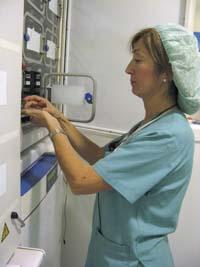
On the belt of embryos
Embryos would appreciate a fast, simple and non-invasive technique that would help them choose healthy embryos. But today there is no. Embryomics strive to do so by analyzing the metabolites of the embryonic culture medium for information on the health of embryos. This research belongs to the field of metabolomics. For Francisco Dominguez, from Embryomics, "Metabolomics provides embryologists and gynecologists with biochemical information to help them in choosing embryos."
The metabolites are the molecules that appear in the metabolism of the embryo, which take them from the feeding medium of the embryos, or which eliminates them as residues. Glucose, pyruvate, lactose, for example, are metabolites.
Embryomics was born in the context of the fertilization assisted in the IVI Foundation of Valencia. It was a research project in origin that, in view of their success, they moved to the Biokabia of the Technology Park of Bizkaia, center of creation of biotechnology companies. They explore the means of growth of embryos manufactured by Embryomics DGP. In this way they can equate the metabolomic study of the medium with the result of PGD, that is, they compare the metabolite profiles of normal and abnormal embryos.
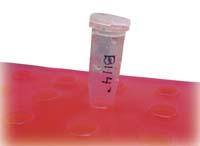
In Domínguez's words, "the embryos and normal ones with many chromosomal abnormalities are distinguished 100% according to the profile of the metabolites. In other cases the separation is less clear, for example, when there is a single monosomy -- instead of a pair of chromosomes -- there is a single chromosome -- it is more difficult to find differences, since it is closer to the normal embryo, but they are also distinguished in these cases".
To carry out this separation, more than a thousand metabolites are analyzed. "They are very complex samples, the metabolism has many metabolites and we analyze to the maximum", explains Domínguez. "We know some of these metabolites, but most of us have them unidentified, we simply differentiate them by mass and retention time." They use magnetic resonance analysis and mass spectroscopy. These techniques allow measuring very small concentrations. But the team is very expensive and we need trained people. This is why Embryomics works with Owl Genomics, who brings technical resources and his experience in metabolomics. This centre is also located in the Technology Park of Bizkaia.
A project, for the moment
Domínguez expects the results to be published by the end of the year, but wants to make it clear: "It is a project and for the moment we are in the research phase, but we are developing the product and at least initially we will offer it to the IVI clinics." The offer will be a service. In the laboratory the means cultivated by the embryo (droplets of about 40 microliters) will be collected and sent to Embryomics, obtaining the result in 24 hours. This will allow the embryologist to better differentiate normal embryos from non-normal ones.
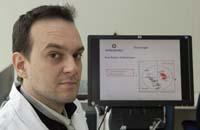
It will be another tool for the embryologist. According to Mandiola, "probably within a few years the metabolomics will have a clear clinical application. But it is still a bit green. In addition, metabolomics will say which embryo will adhere more easily from a chromosomal point of view. It will serve for normal cases, for conventional in vitro fertilizations. But not to replace the DGP. In the DGP you have to be clear what you are looking for."
Esther Fernández coincides with Mandiola. This embryologist, one of the pioneers in the development of PGD in Spain, considers that metabolomics can have many applications in human embryology, but it will not be at all a substitute for PGD. He explains that, among other things, "Preimplantation Genetic Diagnosis (PGD) is used in embryos of couples carrying a serious disease, as well as in the diagnosis of certain genetic diseases or chromosomal alterations –both hereditary–. And that DGP can never be replaced by metabolomics."
However, Fernández sees metabolomics as an important role in one of the great challenges of embryology: the transfer of a single embryo. When the embryologist is about to choose from several embryos, in addition to the morphological score, he would have another data to choose the best option.
However, at present, as Mandiola explains, the number of pregnancies is low, compared to the number of embryos that are implanted (40%-50%), so that two or three embryos are transferred to the mother in each cycle, whenever possible. This poses a risk of multiple pregnancies, and pregnancy of twins -- and especially triplets -- is an inherent risk for both the mother and children. Therefore, the ideal would be to transfer a single embryo, for which much security is required that the embryo advances. In this it consists, therefore, the great challenge of metabolomics: being a tool to choose the most viable embryo.
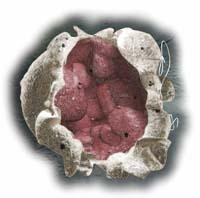
The equation of an embryo equal to a pregnancy, for the moment, is far from reality. In the laboratory, Mandiola has selected the top three of the nine embryos and, in the operating room, they have transferred them to the woman. Just wait for one of them to stick now.
Buletina
Bidali zure helbide elektronikoa eta jaso asteroko buletina zure sarrera-ontzian











